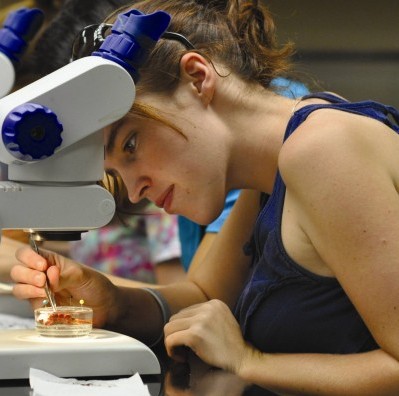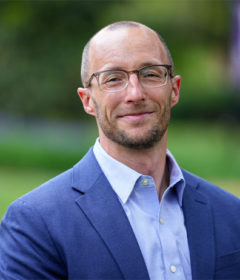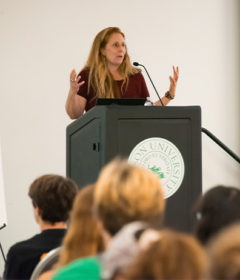NSF grants strengthen foundation

Over the past few years, Stetson faculty members, including Dr. John T. York, Dr. Michael King and Dr. Tandy Grubbs, have been hard at work writing and securing much-needed grants through the National Science Foundation (NSF) to benefit the science departments. Most recently, the NSF has awarded the university a $200,000 grant to purchase a state-of-the-art 400 MHz nuclear magnetic resonance (NMR) spectrometer, which will better allow Stetson’s science professors to develop a new chemistry and biochemistry curriculum centered around hands-on labs and research. Through the NSF’s Transforming Undergraduate Education in Science (TUES), and its Science, Technology, Engineering and Mathematics (STEM) programs, Stetson will develop new ways to use NMR instrumentation in a broad range of chemistry courses.
“We’re very thrilled,” said Assistant Professor of Chemistry Dr. John York, the Co-Principal Investigator for the grant. “With this piece of equipment, our goal is to expose students to world-class instrumentation and give ourstudents hands-on access and exposure to a cutting-edge research tool.”
Jacob Geri, a senior majoring in Chemistry, also expressed excitement about the update to the department, saying “I’m very excited to be able to work with this vital piece of equipment. We’ll be able to go beyond mere simulation and see and use our results. There’s really no limit.” The instrument, which has been installed, was also made possible thanks to the Marshall E. Rinker, Sr. Foundation, Inc. of West Palm Beach, which contributed $100,000 toward the purchase.
The NSF is also currently funding a $610,000 renovation of five science research labs in Sage Hall – three for Chemistry and two for Biology. Funded by a NSF grant made available through the American Recovery and Reinvestment Act, the renovations started about one year ago this fall and are now almost completely finished.
Dr. Michael King, Professor of Biology, has worked as the Principal Investigator overseeing the grant writing and working with fellow faculty members including Dr. Grubbs, Dr. Melissa Gibbs, Dr. York and Dr. Camille King. “The rooms were outdated and almost unusable, so it was time for some changes,” said Dr. King. “It’s all about having safe and modern spaces within which teachers and students can collaborate.”
In 2012, the university will complete a five-year program in which the NSF is providing scholarships for students majoring in Chemistry or Physics. Grubbs composed the grant with the assistance of Co-Principal Investigators Drs. George S. Glander III and Michael King. Currently, about 300 students per year are enrolled in Chemistry and Biochemistry from at least 12 different majors.
“President Obama is depending on the NSF to help lead the nation to a new era of discovery and innovation,” said NSF Director Arden L. Bement, Jr.,“ Investments in research and education build a stronger economic foundation for the country.”
The American Recovery and Reinvestment Act (Recovery Act) was signed into law by President Obama in 2009, and is an unprecedented effort to jump-start our economy, create or save millions of jobs and address long-neglected challenges so our country can thrive in the 21st century. The U.S. Department of Education states that the Recovery Act is an extraordinary response to a crisis and includes measures to modernize our nation’s infrastructure, enhance energy independence, expand educational opportunities, preserve and improve affordable health care, provide tax relief and protect those in greatest need.
By Elizabeth Bogart ’12



